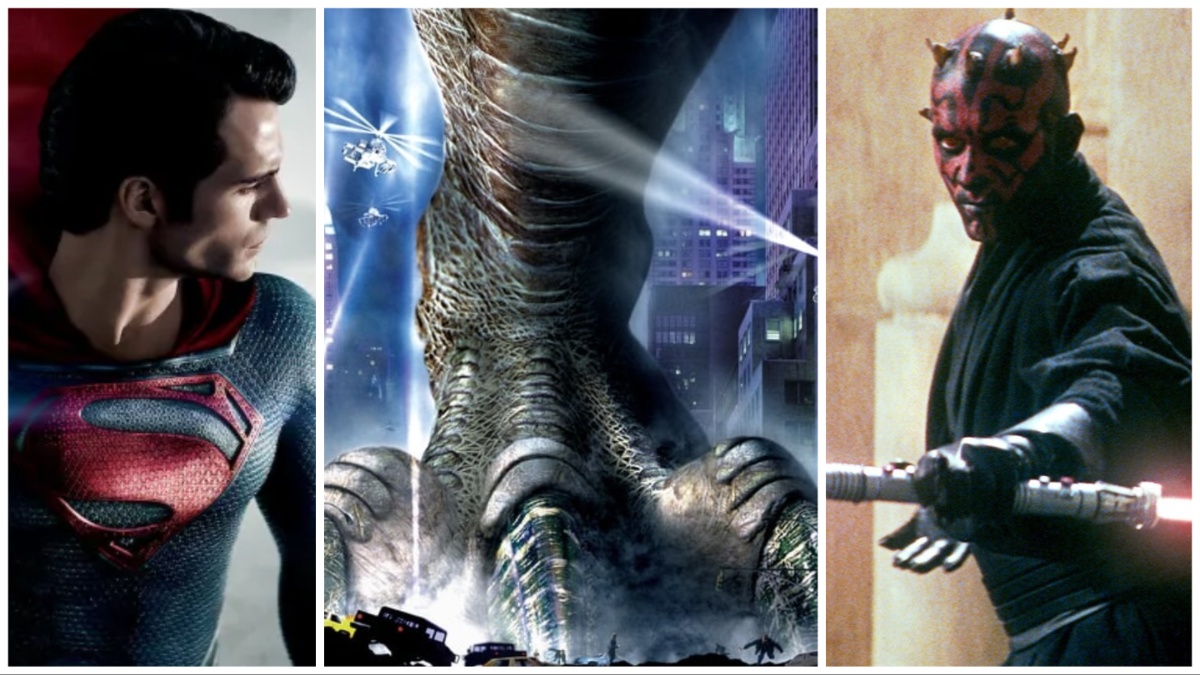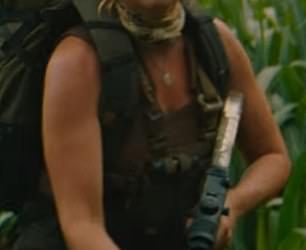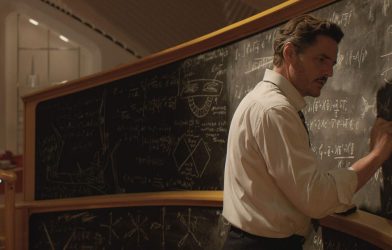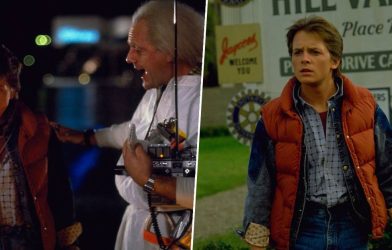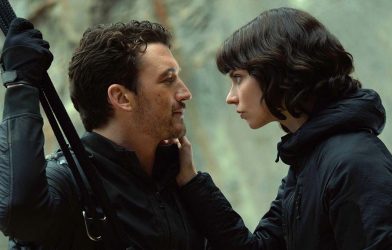Star Wars – Episode I: The Phantom Menace (1999)
Okay, Star Wars – Episode I: The Phantom Menace doesn’t have that great of a trailer. It pretty much plays out the way you would expect a Star Wars trailer to work, with classic queues from the John Williams score and a mixture of familiar and new characters. We get a few comic moments from Jar Jar, an ominous statement from Natalie Portman’s Queen Amidala, and acceptable Star Wars jargon about Jedi and the Force.
Those all might seem familiar in this age of Star Wars content oversaturation. But in 1999, they felt fresh and exciting. The Phantom Menace was the first new Star Wars movie in over 15 years, since the relative high of Return of the Jedi. The fantastic imagery and snips of dialogue in no way revealed what we’d actually get in the film: wooden acting, plodding exposition about pretend economies, and so, so much Jar Jar slapstick. For a few blessed months, that trailer promised the teens and young adults of the late ’90s an amazing Star Wars movie—which is exactly how later generations inexplicably describe The Phantom Menace.
Wild Wild West (1999)
The Fall Guy aside, Hollywood has mostly moved out of its habit of making big budget adaptations of old TV shows that no one remembers. That wasn’t the case in the 1990s, and while the tactic did give us The Fugitive, The Addams Family, and Maverick, it also gave us The Beverly Hillbillies and Wild Wild West. Of course the real appeal of Wild Wild West wasn’t its 1960s predecessor, but another film from the 1990s, the previous Will Smith and Barry Sonnenfeld team-up, Men in Black.
The Wild Wild West trailer did everything it could to convince moviegoers that they were getting Men in Black Cowboy Hats. The always cool Will Smith struts around and trades banter with an older white guy, this time Kevin Kline, and the few shots we get of Kenneth Branagh’s Southern-fried baddie have shades of Vincent D’Onofrio‘s masterful Edgar. While Jon Peters probably cheered at the sight of the mechanical giant spider, everyone else felt betrayed by the actual movie, a painfully unfunny and zany romp that suggested that maybe Sonnenfeld and Smith couldn’t replicate the magic of their first movie together, something that Men in Black II would confirm a few years later.
Pearl Harbor (2001)
Every once in a while, someone lamenting the modern era of CG-heavy, superhero-infested action movies wishes for the return of Michael Bay‘s supremacy. The trailer for Pearl Harbor only fuels that nostalgia. The three-and-a-half minute clip channels Norman Rockwell by way of instantly iconic Americana: a young lad tossing a baseball while Zeroes fly past, boy scouts enjoying an early morning camping trip as the same weapons of death soar past, or Ben Affleck and Josh Hartnett looking like matinee idols under their floppy hair. All of it comes accompanied by a voiceover from Jon Voight as Franklin Delano Roosevelt, foregrounding the patriotic furor that would get supercharged by the end of 2001.
But Michael Bay is no Norman Rockwell, nor is he Joe Johnston, so all the classic Hollywood tropes fell flat in the eventual movie. All sheen and no substance, with an aesthetic best suited for soda-pop commercials, Bay throws every shot of Japanese planes and brave American pilots at the screen. He never sticks with one long enough to develop it though, nor with any character—which given the terrible performances by Affleck, Hartnett, and Kate Beckinsale, might be a good thing. Modern action movies may be bad, but Pearl Harbor proved that poor quality isn’t a modern invention.

